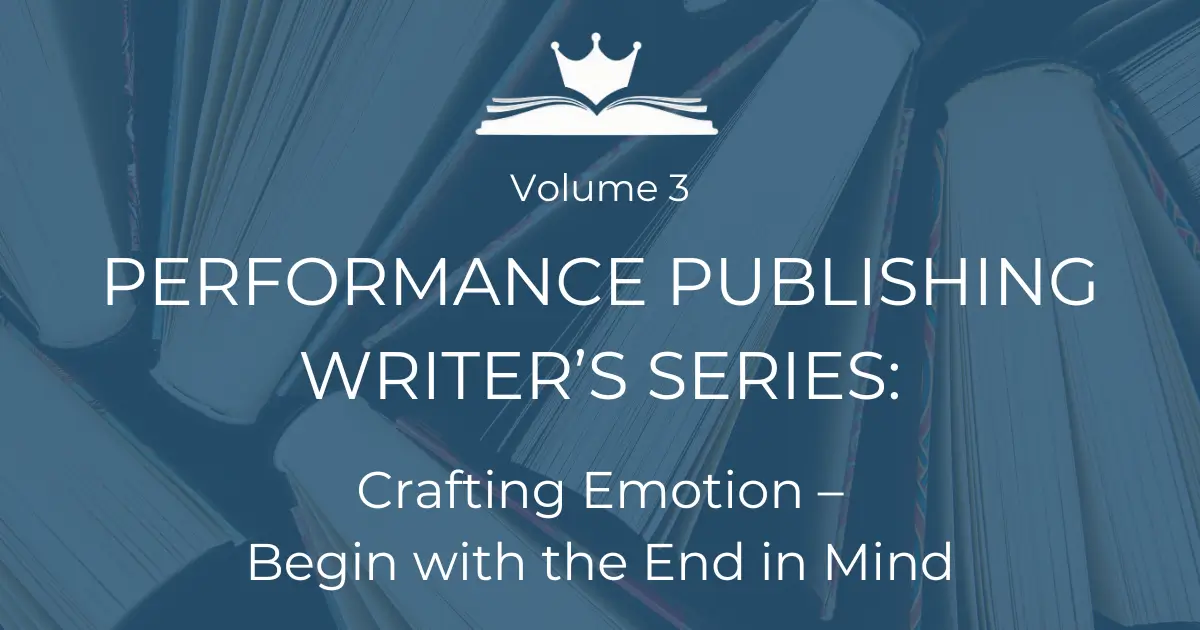
Have you ever finished reading something and felt a surge of emotion? Perhaps a chuckle escaped your lips, a frown creased your brow, or you found yourself nodding in agreement. That's the power of writing with emotion. But how do you intentionally craft such an experience with your writing? The secret lies in beginning with the end in mind.
Think about your most powerful memories. They could be from childhood or recent years. From the most joyous times you can remember to your deepest pain. I bet all those memories have one thing in common. You had a lot of emotion at the time. Emotion is the thing that imprints our memories. Ho hum, everyday events and interactions fade quickly. But we remember the ones that elicit strong emotion.
When it comes to writing, that’s the goal, right? When we take the time to put something in writing, we want it to connect with and be remembered by our reader. In order to do that, we have to make them feel something. That’s why the best non-fiction books aren’t just a collection of facts. They include the stories and experiences of the author or the people the author knows. They connect with the reader on an emotional level.
Here's a list of some emotions that a writer might aim to elicit through their writing:
1. Curiosity: Leave your reader wondering “what else?”
2. Empathy: Creating a connection with you and your story that helps the reader relate.
3. Fear: Is there something that your reader should be concerned about?
4. Joy: Provoking happiness through uplifting or humorous elements.
5. Sadness: A sense of loss or melancholy.
6. Anger: Generating a strong response to injustices or frustrations.
7. Surprise: Delivering unexpected twists or revelations.
8. Nostalgia: Taking your reader back in time can create strong emotions.
9. Inspiration: Motivating readers to take action or change their perspective on an issue.
Shaan Puri, entrepreneur and podcast host, has a useful framework for starting any piece of writing. Shaan cleverly labels his list of 8 emotions using “text speak” abbreviations.
1. LOL - That’s so funny!
2. AWW - That’s sooo cute!
3. WOW - That’s amazing!
4. WTF - That makes me angry!
5. NSFW - That’s crazy!
6. OHHHH - Now I get it!
7. YAY - That’s great news!
8. FINALLY - Someone said what I feel!
By tapping into these emotions, writers can create a more immersive and affecting experience for their readers.
This approach is not just about manipulating feelings. it's about enhancing the reader's journey through your words. Whether you’re crafting a blog post, an essay, or a chapter in your book, your goal is to create a meaningful emotional arc.
For shorter pieces, like a blog or an article, focus on one primary emotion. This clarity helps you stay on track and ensures every sentence contributes to the desired emotional impact.
In longer works, like your manuscript, consider settling on one overarching emotional theme. Really consider the feeling you want your reader to have when they read your book. For our clients who are writing to cement their position as a thought leader, it’s likely a version of “OHHHH – Now I get it”. You want them to get that you are the expert on this topic and that they can rely on your expertise.
Once you have settled on the big emotional goal for your book, you can then take the same approach to each chapter. Varying the emotional goal of your reader as they experience each chapter makes your book more readable. Evoking different emotions adds depth and richness to the reader's experience. This layered approach keeps the reader engaged and invested in your narrative. When someone says they “couldn’t put the book down” it’s because they are buying into the emotional ride the author is taking them on.
Here are some tips for weaving emotion into your writing.
1. Identify the Core Emotion: Before you start writing, decide on the emotion you want to evoke. What do you want your readers to feel at the end of your piece?
2. Tailor Your Content: Every element of your writing, from the anecdotes you choose to the facts you highlight, should reinforce the chosen emotion.
3. Adjust the Tone and Style: The way you write—your word choice, sentence structure, and pacing—should all align with the emotional experience you aim to create.
4. Reflect and Revise: After your first draft, revisit your work with the end emotion in mind. Ensure each section of your writing builds towards that emotional climax.
By writing with the reader’s emotion in mind, you guide them through a journey, leading them to the emotional destination you’ve crafted. This approach not only enriches the reader's experience but also enhances the impact and memorability of your writing.
As we continue our Writer’s Series, we’ll explore more tools and techniques to enhance your writing prowess. Remember, effective writing isn’t just about what you say; it’s about how you make your readers feel!



